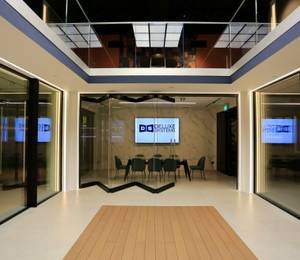A year ago, my colleagues Amy Pothier and Gail Napell wrote how the impacts of the COVID-19 pandemic have been particularly acute for people with disabilities, sighting examples such as frequent hand-washing is not always possible for people with certain types of physical disabilities, and physical distancing is especially challenging for those who rely upon personal aides or caregivers.
As we now begin to imagine what a post-pandemic world needs, we are taking a closer look at the needs of people with varied abilities exploring the opportunities to remake the places we live, work, and play in more accessible and more inclusive. To overcome the ignorance and prejudice surrounding disability, we need to educate ourselves and understand the current experiences of exclusion so we can be more thoughtful about how we design and curate spaces.
However, accessibility is about more than just making physical changes to a space. To succeed in designing inclusive environments, we need to start with building a ‘culture of accessibility’ first because we know that spaces become inclusive when empathy and freedom are built into them for people of all abilities.












